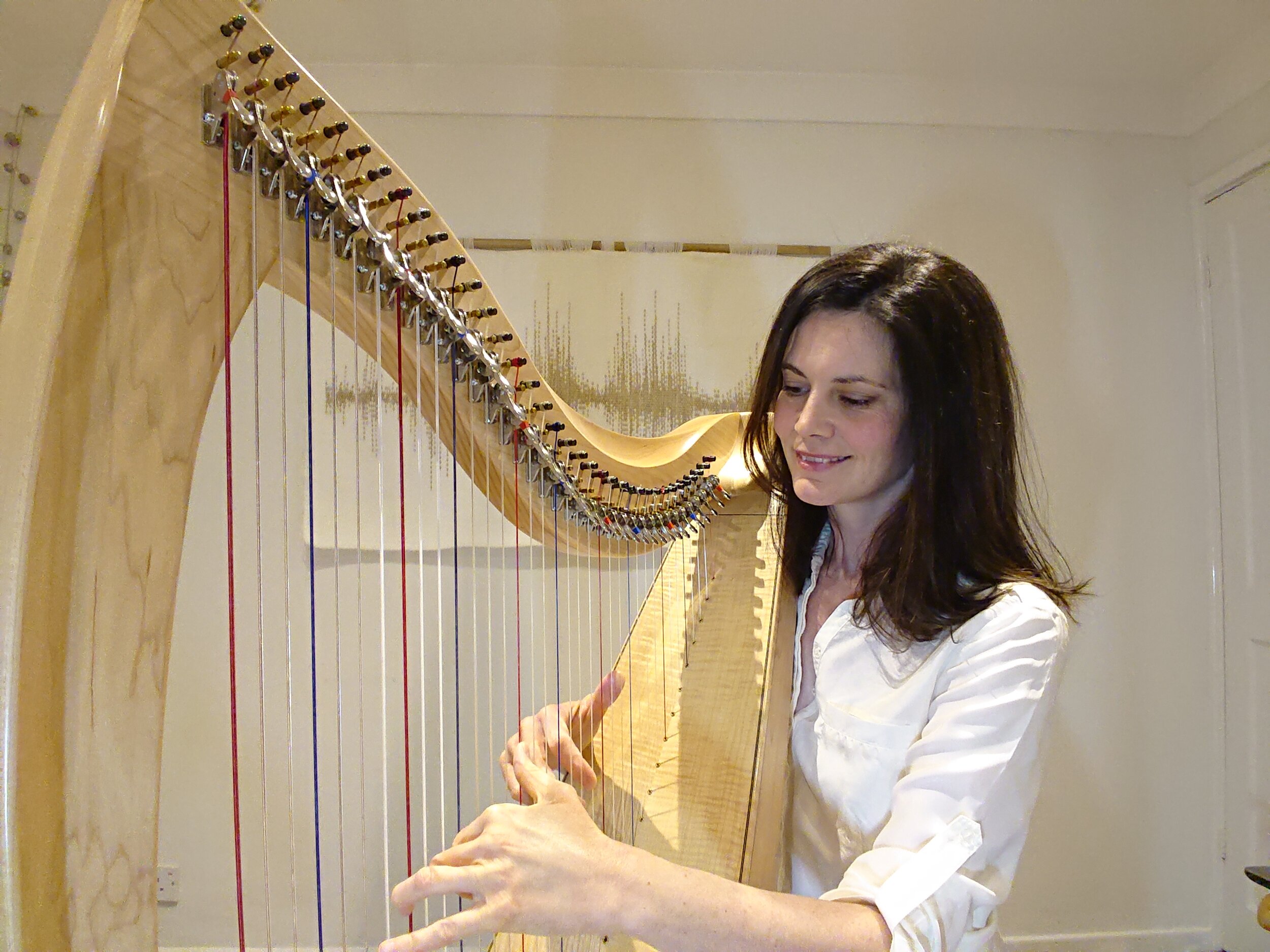The Wellness Movement's certified harp therapist Julia Mitchell reveals why this ancient practice is good for our mental wellbeing – and how it can boost productivity.
For Julia, playing the harp is not just about creating wonderful music. It's about helping people access a state of calm and inner peace. The certified harp therapy practitioner offers to help people relax, rest and create beautiful images in their minds. Harp Therapy has numerous benefits, from improving sleep to relieving pain. It can even boost productivity in the workplace. In these difficult and uncertain times, that's music to our ears.
What is harp therapy?
Harp therapy uses the sound of a harp to help people in a variety of ways – from a relaxation to help maintain a healthy mind to playing for an anxious patient before an operation. Music is a universal language that can speak to people in deep and profound ways.
Soon after Julia joined corporate wellbeing specialists The Wellness Movement, the Covid -19 pandemic hit and she changed her sessions so they would work online. She invested in high quality audio equipment, and added spoken relaxation exercises and visualisations to the music to enhance the experience.
The result is a highly effective preventative therapy session that helps healthy minds stay beautifully relaxed and yet active.
How is it different from a regular performance?
The key difference between therapeutic playing and a concert is that with therapeutic playing the focus is on the listener instead of the performer. Usually the attention is on the harpist and their skill, but here the most important person is the listener. It’s about how they are feeling and responding to the music.
What are the main benefits of harp therapy?
It reduces stress and has some great physiological benefits, such as relaxed muscle tension, increased oxygenation, lowered blood pressure and slower heart rate. It offers a period of stillness – no matter how busy you are, you stop what you’re doing, so your body and mind can rest and relax. The power of music makes it hard to feel stressed at the same time. It’s a powerful form of self-care.
It’s creative. The visualisation allows your mind to draw on imagination and memory. So despite being relaxed, you’re also using your mind.
It can improve your sleep. Studies have shown that harp music can promote deep sleep.
It can help with pain management and anxiety. In the USA, harp therapy is frequently used in hospitals and hospices. Research has found bedside therapeutic harp music to be beneficial in reducing pain and anxiety (because of the endorphins it produces), as well as stabilising vital signs.
The benefits can last long after the session has ended. The images your mind creates through visualisation remain at the front of your mind, so they are quick and easy to access when you need something to relax you. In lockdown, if you live in a city and can’t visit your favourite landscape like the sea or countryside, then your mind can take you there instead.
How does it make you feel while you’re playing?
Calm and inspired. When I play, I create my own pictures in my mind. Afterwards, things feel achievable. I feel relaxed and capable.
What is it about harp music that makes it so effective in therapy?
This type of therapy isn’t new – the harp has been used for thousands of years for therapeutic purposes. In the Bible, David plays his harp for Saul. The harp was also used therapeutically in Ancient Egypt and in medieval monasteries in France. It has a long history of being used to calm the mind. Most people don’t come across the harp that often, so there’s something about it that’s different and intriguing. The vibration from each string somehow gets right into you and is deeply soothing.
How can harp therapy be used in the workplace?
In non-Covid times I would take my harp to a company and play live. These days, the sessions are live streamed over Zoom. All you need is a comfortable space, a phone or a laptop and maybe some earphones. The sound quality is surprisingly good, and other family members can also take part. Companies can run the sessions when they like. At the end of the day, it leaves staff in a relaxed state. But it can also be good as a 30-minute relaxation during the day.
Sessions begin with a few notes played quietly and a guided relaxation. Then there is a series of visualisations, where I encourage listeners to imagine a place where they feel secure and peaceful – perhaps a snowy landscape or beach – and explore it. It ends with jauntier, familiar music – something like Here Comes The Sun – and some stretches so people feel wide awake and energised.
Can it boost productivity?
Studies have shown that power naps can improve your productivity, as well as lowering your chance of developing heart disease. A good quality, rest at lunchtime benefits how the brain works later in the day. It also leaves people feeling happy – the most common feedback I receive after a session is “bliss”.


